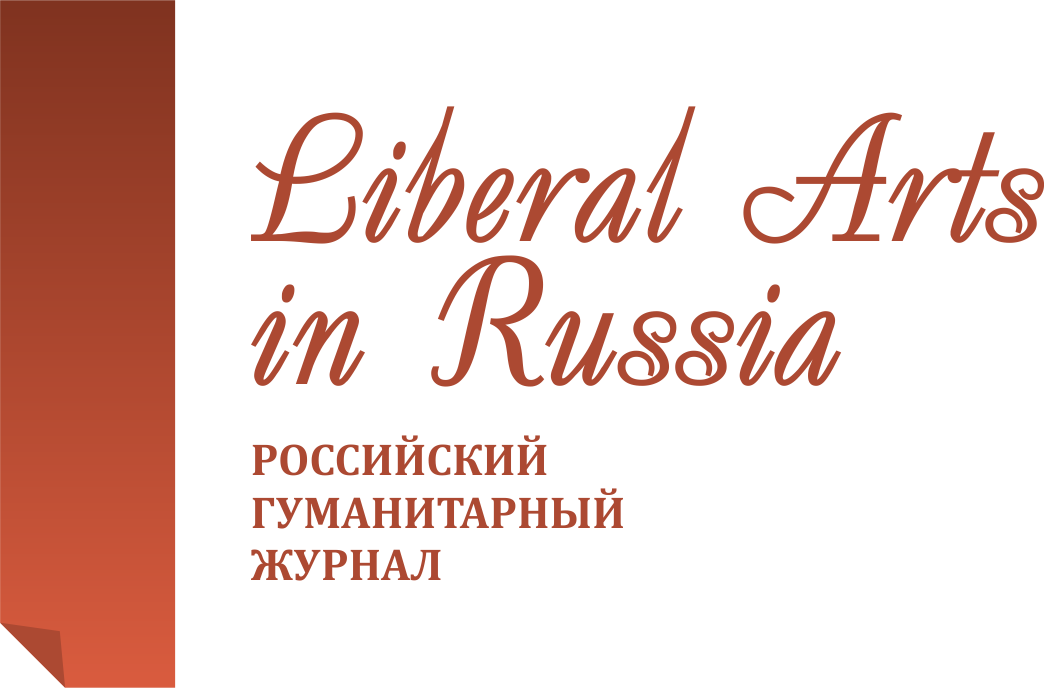Linguistic characteristics and significance of the Kyakhta language
Liberal Arts in Russia. 2022. Vol. 11. No. 6. Pp. 435-443.
Get the full text (Russian) Email: olgakasymova@yandex.ruAbstract
The linguistic characteristics and significance of the Kyakhta language, which seems to be the most typical result of Russian-Chinese language contact, are investigated. The main results of the study: 1. The evolution of the Kyakhta region and the factors influencing it were determined: The Kyakhta region was approved after the conclusion of the “Kyakhta Treaty” in 1727. In the XVIII-XX centuries, this area was the most important center of border trade between Russia and China. The prosperity of the Kyakhta region continued until 1921, when the “Maimachen War” began between the USSR, Mongolia and China. Thus, the development of the area was influenced by political, geographical, historical and social factors; The reasons for the formation of the Kyakhta language and its linguistic characteristics are revealed: for the first time, the Kyakhta language began to be used by Chinese merchants, and gradually spread throughout the region and for everyone. The Kyakhta pidgin arose as a result of the need for communication between representatives of the Russian and Chinese people participating in trade and interacting in everyday and business life. The Kyakhta language is essentially a variety of the Russian language, heavily influenced by the Chinese and Mongolian languages. From the point of view of phonetics, in addition to individual sinicized alternations, it mainly has the syllabism of the Chinese language and a fixed stress. From the point of view of grammar, it is analytical like the Chinese language, there are few morphological changes in it, parts of speech are formed under the influence of Chinese and Mongolian languages. From the point of view of vocabulary, it included not only borrowed words from Russian and Chinese, but also tracing words, as well as derivational means of these languages, which reflects the linguistic cultures of the donor languages. From the point of view of spelling, the absence of the letter ъ and the instability of its written and literary forms are noted; 3. The significance of the Kyakhta language is determined: in a theoretical aspect, its study enriches Russian philology, provides reference assistance in the study of historical, economic, social, geographical and interdisciplinary sciences. In a practical aspect, he promoted communication and mutual understanding between the Russian and Chinese peoples and ensured Russian-Chinese business and cultural interaction. The scientific novelty of the article lies in the fact that the linguistic characteristics of the Kyakhta language are systematically structured in it. Also, using traditional methods, an analysis of the influence of the Mongolian language as an intermediary language is introduced into the study of Russian-Chinese bilingual contact in order to more fully and deeply study the Kyakhta language. The purpose of the article is to describe the status of Russian-Chinese language contacts in the XVIII-XX centuries, using the relevant linguistic data, as well as to provide reference materials for modern interdisciplinary research and to predict the directions and prospects of modern Russian-Chinese language contacts.
Keywords
- • Kyakhta language
- • language contacts
- • the growth of analyticism in language
- • pidgin
References
- Bichurin H. Ya. Radi vechnoi pamyati: Poeziya. Stat'i, ocherki, zametki. Pis'ma. Cheboksary: Chuvash. kn. izd-vo, 1991.
- Burykin A. A. Rossiya i ATR. 2019. No. 3. Pp. 196-198.
- Bykonya G. F. Andrei Dubenskii - osnovatel' Krasnoyarska [Andrey Dubensky - founder of Krasnoyarsk]. Krasnoyarsk: Trend, 2008.
- Zhdanova N. A. Sovremennyi russko-kitaiskii pidzhin Zabaikal'ya v strukturno-sistemnom i kommunikativnom aspektakh (na materiale rechi kitaiskogo etnolekta): dis. ... kand. filol. nauk. Ulan-Ude, 2016.
- Kostyrko V. Rossiiskii zhurnal. 2013. URL: http://www.russ.ru/Mirovaya-povestka/Moya-tvoya-ponimaj-netu-ili-Pochemu-tak-vazhno-opravdyvat-doverie.
- Qia4 ke4 tu2 - wan4 li3 cha2 dao4 de zhong1 zhuan3 zhan4. URL: https://m.yunnan.cn/system/2021/06/24/031529827.shtml.
- Ma3 na4 . Yu3 yan2 jie1 chu4 yu3 wen2 hua4 jiao1 rong2. Lan2 zhou1 da4 xue2 shuo4 shi4 xue2 wei4 lun4 wen2. 2013 nian2, 101 ye4.
- Popova I. F., Takata Tokio. Slovari kyakhtinskogo pidzhina [Dictionaries of Kyakhta pidgin]. Moscow: Nauka, 2017.
- Ao4 li4 jia1. Han4 e2 yu3 yan2 jie1 chu4 yan2 jiu1. Hei1 long2 jiang1 da4 xue2 bo2 shi4 lun4 wen2. 2012. 188 ye4.
- Jiang1 ying2 li3 xin1. Qian3 xi1 zhong1 e2 bian1 jing4 cheng2 shi4 xian4 dai4 e2 han4 pi2 qin1 yu3. Hei1 he2 xue2 yuan4 xue2 bao4. 2020. No. 9. 109-112 ye4 .
- Cherepanov S. I. Izvestiya Akademii nauk po otdeleniyu russkogo yazyka i slovesnosti. 1853. Vol. 2. No. 10. Pp. 370-377.
- Zhang1 wei3 bian1 yi4. Yu3 yan2 rong2 he2 fan2 rong2 e2 yu3 shi4 ge4 "Da4 jia1 zu2". 2017. E2 luo2 si1 long2 bao4 [Wang3 zhan4 ]. URL: https://m.sohu.com/a/157402003_290563.
- Shusharina A. A. Vvedenie v slavyanskuyu filologiyu: ucheb. pos. [Introduction to Slavic philology: textbook]. Moscow: FLINTA, 2011.
